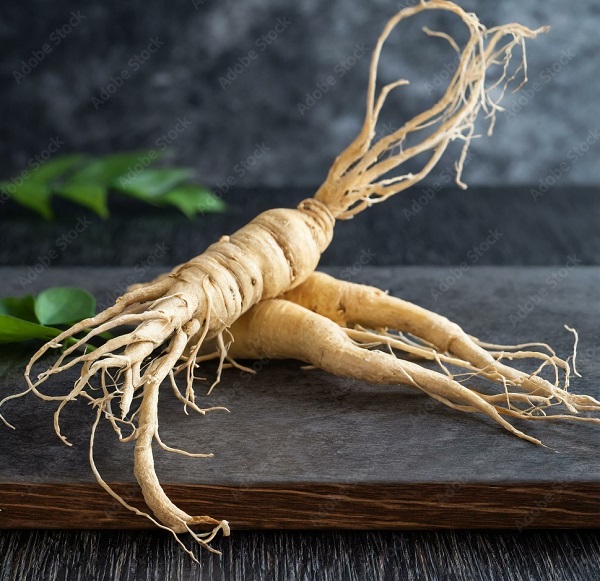“Cutting-Edge Wellness Alternatives in 2025”
Alternative medicine, also known as complementary or integrative medicine, encompasses a wide range of healing practices that fall outside conventional Western medicine. Over the past few decades, interest in alternative therapies has surged due to growing concerns about the side effects of pharmaceuticals, the rise of chronic diseases, and a shift toward holistic well-being.
Recent advances in research and technology have brought new credibility to many alternative treatments, integrating them into mainstream healthcare. This essay explores the latest developments in alternative medicine, including herbal medicine, acupuncture, mind-body therapies, energy healing, and digital health innovations.

1. Advances in Herbal Medicine and Nutraceuticals
Herbal medicine has been used for centuries, but modern science is now validating its efficacy through rigorous research. Recent advances include:
a. Standardization and Bioactive Compound Extraction**
New extraction techniques, such as supercritical CO₂ extraction and nanotechnology, allow for more precise isolation of active compounds from plants. For example, curcumin from turmeric and cannabidiol (CBD) from cannabis have been extensively studied for their anti-inflammatory and neuroprotective properties.
b. Synergistic Formulations**
Researchers are exploring polyherbal formulations where multiple herbs work synergistically. Traditional systems like Ayurveda and Traditional Chinese Medicine (TCM) have long used such combinations, and modern studies now confirm their enhanced efficacy compared to single-compound drugs.
c. Personalized Herbal Medicine**
With advances in genomics, personalized herbal treatments are emerging. Pharmacogenomics helps identify how individuals metabolize plant compounds, allowing tailored herbal prescriptions for conditions like anxiety, diabetes, and autoimmune disorders.
d. FDA-Approved Herbal Derivatives**
Some plant-based drugs have gained FDA approval, such as:
– Artemisinin** (from sweet wormwood) for malaria.
– Epidiolex** (CBD-based) for epilepsy.
– Fulyzaq** (crofelemer, from the Amazonian sangre de grado tree) for HIV-related diarrhea.
2. Technological Innovations in Acupuncture
Acupuncture, a key component of TCM, has evolved with modern technology:
a. Electroacupuncture and Laser Acupuncture**
Electroacupuncture uses low-frequency electrical pulses to enhance needle stimulation, showing promise in pain management and neurological rehabilitation. Laser acupuncture, a non-invasive alternative, is being used for pediatric and sensitive patients.
b. AI and Acupuncture Point Mapping**
Artificial intelligence (AI) algorithms analyze patient data to optimize acupuncture point selection. Wearable devices with biofeedback sensors can now guide practitioners in real-time.
c. Evidence-Based Validation**
Recent meta-analyses confirm acupuncture’s effectiveness for:
– Chronic pain (back pain, osteoarthritis).
– Migraine prevention.
– Chemotherapy-induced nausea.
The WHO recognizes acupuncture for over 100 conditions, and insurance providers increasingly cover it.
3. Mind-Body Therapies: From Meditation to Virtual Reality
Mind-body therapies emphasize the connection between mental and physical health. Recent advances include:
a. Digital Meditation and Biofeedback Apps**
Apps like **Headspace** and **Calm** use AI to personalize meditation programs. Wearable biofeedback devices (e.g., Muse headbands) measure brainwaves to enhance mindfulness training.
b. Virtual Reality (VR) for Stress and Pain Relief**
VR-based meditation and guided imagery are being used in hospitals for:
– Chronic pain management.
– PTSD treatment.
– Pre-surgical anxiety reduction.
c. Yoga and Tai Chi Research**
Studies show yoga and tai chi improve:
– Cardiovascular health.
– Balance in elderly populations.
– Mental health (anxiety, depression).
New hybrid practices, such as **aqua yoga** and **aerial yoga**, are gaining popularity for their therapeutic benefits.

4. Energy Medicine and Biofield Therapies
Energy-based therapies, once considered pseudoscience, are gaining scientific traction:
a. Pulsed Electromagnetic Field (PEMF) Therapy**
Used for:
– Bone fracture healing.
– Depression and insomnia.
– Chronic inflammation.
b. Reiki and Healing Touch in Hospitals**
Studies suggest Reiki can reduce pain and anxiety in cancer patients. Major hospitals, including the Cleveland Clinic, now offer Reiki as part of integrative care.
c. Quantum Healing and Scalar Energy Research**
Emerging theories explore how biofield therapies might influence cellular communication, though more research is needed.
5. Integrative Digital Health and Telemedicine
Technology is bridging alternative and conventional medicine:
a. Telemedicine for Alternative Therapies**
Patients can now consult herbalists, acupuncturists, and naturopaths online. AI chatbots provide personalized wellness advice based on alternative medicine principles.
b. Blockchain for Herbal Supply Chains**
Blockchain ensures transparency in sourcing herbal products, preventing adulteration and counterfeit remedies.
c. AI in Traditional Medicine Diagnosis**
AI models trained on TCM and Ayurvedic texts assist practitioners in diagnosing imbalances and recommending treatments.
6. Challenges and Future Directions
Despite progress, challenges remain:
– **Standardization and Regulation**: Many herbal products lack quality control.
– **Skepticism in Mainstream Medicine**: More clinical trials are needed.
– **Ethical Sourcing**: Overharvesting of medicinal plants threatens biodiversity.
Future trends may include:
– **CRISPR-engineered medicinal plants** for enhanced therapeutic properties.
– **Psychedelic-assisted therapy** (e.g., psilocybin for depression).
– **Microbiome-based herbal treatments** for gut-brain axis disorders.
Human Progress Before the Advent of Alternative Medicine

Before the development of alternative medicine, human progress in health and healing was shaped by trial and error, spiritual beliefs, and early scientific inquiry. Ancient civilizations relied on natural remedies, rituals, and rudimentary surgical techniques to treat illnesses. Over time, these practices evolved into more structured medical systems, laying the foundation for modern medicine. This essay explores human progress in health and medicine before the formalization of alternative healing systems, examining key developments in prehistoric, ancient, and early modern societies.
1. Prehistoric Medicine: Instinct and Survival
In prehistoric times, humans relied on instinct, observation, and experimentation for healing. Early medical practices were closely tied to survival and the natural environment.
a. Herbal Remedies and Plant Medicine
Early humans discovered medicinal plants through trial and error.
Evidence from Neanderthal remains suggests the use of herbs like yarrow and chamomile for pain relief.
Paleolithic cave paintings depict shamanic rituals, indicating spiritual healing traditions.
b. Primitive Surgical Techniques
Trepanation (drilling holes in the skull) was practiced to relieve headaches or release “evil spirits.”
Archaeological findings show healed trepanation wounds, suggesting some patients survived the procedure.
c. Role of Shamans and Spiritual Healing
Illness was often attributed to supernatural causes.
Shamans acted as healers, using rituals, chants, and hallucinogenic plants to treat ailments.
2. Ancient Civilizations: The Birth of Organized Medicine
As societies became more complex, so did their medical practices. Ancient civilizations developed early medical systems based on observation and natural philosophy.
a. Mesopotamian Medicine (3000–500 BCE)
Egyptian doctors performed simple surgery, fixed broken bones, and conducted dentistry..
Physicians used herbs, animal products, and minerals for treatments.
Diseases were believed to be caused by demons, requiring exorcisms alongside herbal remedies.
b. Egyptian Medicine (2700–300 BCE)
The Ebers Papyrus (1550 BCE) documented over 700 remedies, including garlic for infections and honey for wounds.
Mummification advanced knowledge of human anatomy.
c. Greek and Roman Medicine (800 BCE–500 CE)
Hippocrates (460–370 BCE), the “Father of Medicine,” rejected supernatural explanations, emphasizing natural causes of disease.
The Hippocratic Oath established medical ethics.
Galen (129–216 CE) expanded on anatomy through animal dissections, influencing medicine for over a millennium.
Roman public health systems included aqueducts, baths, and sewage systems to prevent disease.
3. Medieval and Renaissance Medicine: Between Superstition and Science
The Middle Ages saw a mix of religious dogma and emerging scientific thought, while the Renaissance revived classical knowledge and spurred medical advancements.
a. Islamic Golden Age (8th–14th Century)
- Avicenna (980–1037 CE) wrote The Canon of Medicine, a medical encyclopedia used in Europe for centuries.
- Islamic hospitals introduced quarantine and systematic medical training.
- Surgeons like Al-Zahrawi (936–1013 CE) developed surgical instruments still in use today.
b. European Medieval Medicine (500–1500 CE)
- Monasteries preserved medical texts and grew medicinal herbs.
- The Black Death (1347–1351) led to early public health measures like isolation and sanitation laws.
- “Four Humors” theory (blood, phlegm, black bile, yellow bile) dominated treatment, leading to bloodletting and purging.
c. Renaissance Breakthroughs (14th–17th Century)
- Andreas Vesalius (1514–1564) corrected Galen’s anatomical errors with human dissections.
- William Harvey (1578–1657) discovered blood circulation.
- The printing press spread medical knowledge, reducing reliance on superstition.
4. The Scientific Revolution and the Rise of Modern Medicine
The 17th–19th centuries saw the decline of mystical healing and the rise of evidence-based medicine.
a. Germ Theory and Vaccination
- Louis Pasteur (1822–1895) proved germs cause disease, leading to sterilization.
- The first effective vaccination was the smallpox vaccine, created by Edward Jenner (1749–1823).
b. Surgical Advancements
- Joseph Lister (1827–1912) introduced antiseptic surgery, reducing infections.
- Anesthesia (1846) made surgery less painful and more precise.
c. Pharmaceutical Developments
- Morphine was the first alkaloid to be isolated from plants by Friedrich Sertürner (1783–1841).
- Synthetic drugs like aspirin (1897) replaced traditional herbal remedies in mainstream medicine.
5. The Shift Toward Alternative Medicine
By the 19th century, mainstream medicine became highly institutionalized, but some sought gentler, more holistic approaches—leading to the revival of alternative systems like:
- Homeopathy (Samuel Hahnemann, 1796)
- Chiropractic (Daniel Palmer, 1895)
- Naturopathy (Benedict Lust, early 1900s)
These systems emerged as reactions to the perceived harshness of conventional treatments, paving the way for modern alternative medicine.
Conclusion:
Alternative medicine is undergoing a renaissance, driven by scientific validation and technological innovation. From AI-powered acupuncture to blockchain-secured herbal remedies, these advances are making holistic healing more accessible and evidence-based. As research continues, the integration of alternative and conventional medicine could revolutionize healthcare, offering safer, more personalized treatment options.
1. What are the most significant technological advancements in alternative medicine in 2025?
Answer: In 2025, key technological advancements include:
AI-powered diagnostics for personalized herbal and acupuncture treatments.
Virtual Reality (VR) therapy for pain management and mental health.
Wearable biofeedback devices that monitor stress and suggest meditation or breathing exercises.
Blockchain-tracked herbal medicine to ensure authenticity and prevent counterfeit products.
CRISPR-enhanced medicinal plants for more potent and sustainable remedies
2. How has modern research improved the credibility of traditional herbal medicine?
Answer: Recent studies have:
Identified active compounds in herbs (e.g., curcumin, CBD) with proven anti-inflammatory and neuroprotective effects.
Validated polyherbal formulations from Ayurveda and Traditional Chinese Medicine (TCM) through clinical trials.
Used pharmacogenomics to tailor herbal treatments based on individual genetics.
Led to FDA-approved plant-based drugs like Epidiolex (CBD for epilepsy) and Fulyzaq (for HIV-related diarrhea).
3. What role does acupuncture play in modern pain management?
Answer: In 2025, acupuncture is widely recognized for:
Chronic pain relief (back pain, migraines, arthritis) with electroacupuncture and laser acupuncture.
Post-surgical recovery and chemotherapy-induced nausea reduction.
Integration with AI-guided point mapping for precision treatment.
Coverage by major insurance providers due to strong clinical evidence.
4. How is digital health transforming alternative medicine?
Answer: Digital innovations include:
Telemedicine platforms connecting patients with naturopaths and acupuncturists remotely.
AI chatbots offering personalized wellness advice based on TCM or Ayurvedic principles.
Meditation and biofeedback apps (e.g., Muse headbands) that track brainwaves for stress reduction.
VR-based therapies for PTSD, anxiety, and chronic pain management.

1 comment
[…] Your Eating Habits to Stay Fit/2025 Fitness Gadgets and Tools: Revolutionizing the Way We… Current-Advances in Alternative Medicine/2025 How to Improve Mental Health Every Day: Practical… How Fitness Gadgets Are Empowering the Way […]